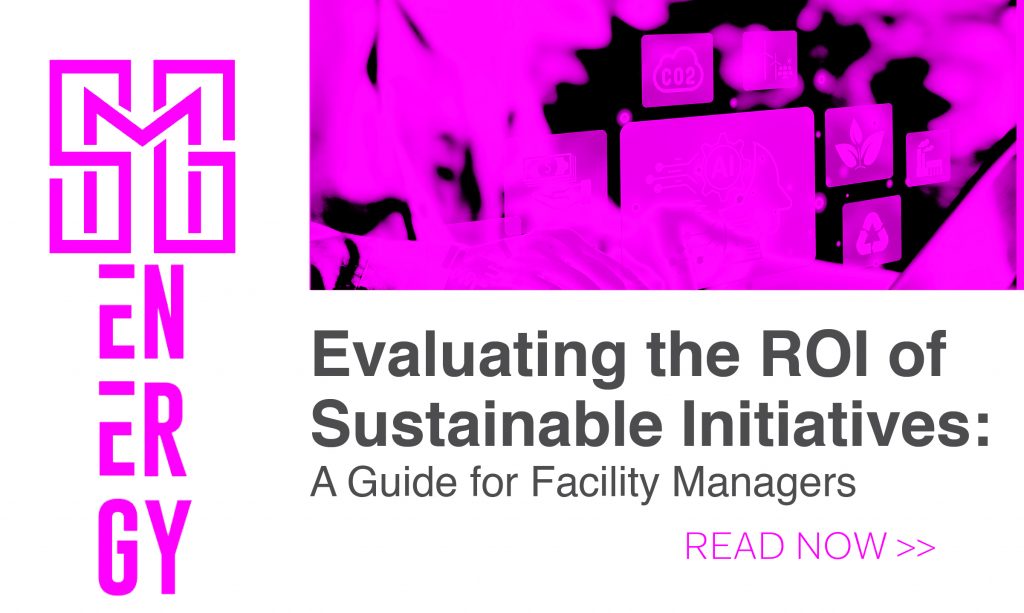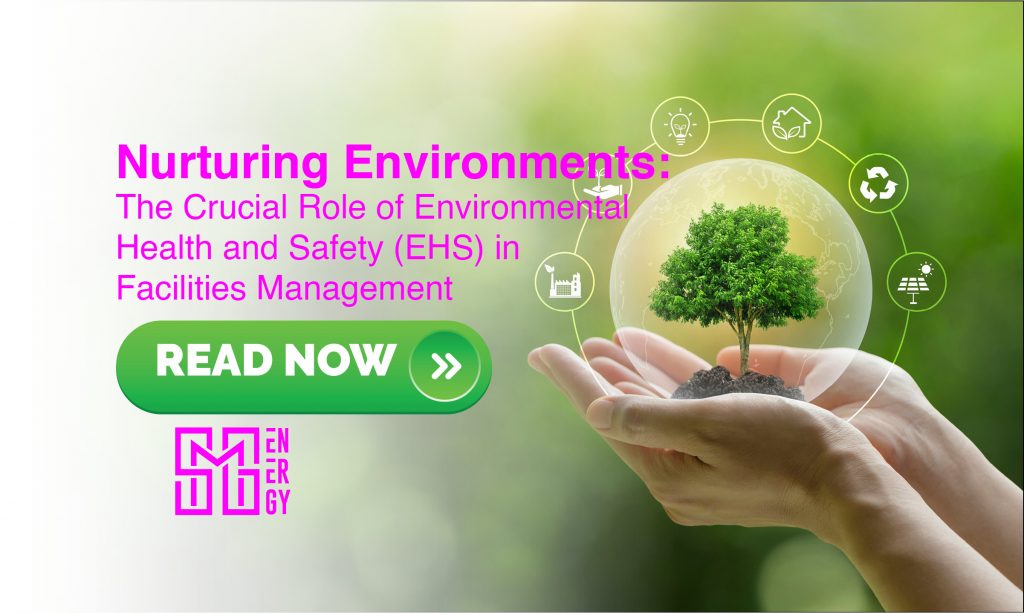At times, you can improve energy efficiency in retail with the flip of a switch — literally. But there are many other ways that need more planning and step-by-step execution. With rising energy costs, multisite retailers are searching for ways to conserve energy, reduce carbon emissions and thereby contain costs.
Let’s take a closer look at what multisite retail energy management means and examine useful practices that can improve energy efficiency. These could range from simple solutions that you can implement quickly to more difficult ones that require the assistance of a partner.
WHAT IS ENERGY MANAGEMENT IN RETAIL?
Energy management in retail involves two parts. One part is monitoring systems to collect data you can use to analyze energy consumption. The other is taking that information and identifying ways to optimize equipment schedules, set points, and flow rates to provide methods that can conserve usage and improve energy efficiency. According to GreenBiz, the retail industry consumes about $20 billion in energy annually. With that much money on the line yearly, any improvements that retail energy management can make in saving energy will keep cash from flying out the door.
19 TIPS TO IMPROVE ENERGY EFFICIENCY IN A RETAIL BUILDING
Methods to reduce energy use can be found in many places, from the obvious to the
inconspicuous. We have broken down the many tips into categories.
FREE WAYS TO MAKE A DIFFERENCE
1. FLIP THE SWITCH.
Turning off the lights when not needed is undoubtedly the easiest way to save energy. While the savings are small for each time you cut the lights, they can add up when you multiply it by the number of lights you turn off and the length of time they are off. Day by day and month by month, they can add up to greater savings.
2. ADJUST THE THERMOSTAT.
Whether it’s the AC in the summer or the heater in the winter, you can save energy by altering the thermostat when areas are not in use. According to the Department of Energy, you can save as much as 10% a year on heating and cooling by simply turning your thermostat back 7 to 10 degrees from its standard setting for eight hours a day.
3. POWER DOWN OFFICE EQUIPMENT.
Everything from computers to monitors to copiers to cash registers to vending machines with non-refrigerated products can be turned off or set to “power saving” or sleep mode when not in use. Numbers vary on how substantial the savings can be by performing these acts, but it is clear they can bring significant energy reduction. Turning equipment off at the end of the day can turn up the energy savings.
4. MAKE THE MOST OF SHADES, BLINDS, AND DOORS.
This is another easy-to-perform task that can save energy. Draw the curtains or shades on hot summer days to keep the sun and some of the heat out. Open them up on winter days to let the sun in to help heat the building. This also provides natural lighting and reduces the need for as much artificial lighting. You can also save energy by ensuring doors are fully closed to keep any extreme weather from creeping into the building.
MAKING CHANGES THAT ARE LOW COST
5. INSTALL MORE EFFICIENT LIGHTING.
This is another solution that brings incremental improvements that add up to more significant savings in the long run. Replacing incandescent bulbs with compact fluorescents not only can reduce energy consumption, but they will last much longer too. In other areas, upgrading fluorescent lighting with LED lighting can provide significant results. This upgrade can be less expensive if you retrofit the existing fixture for LEDs. Replacing the fixture might be the next best option. Savings down the road will help pay for the replacement cost.
6. UPGRADE WITH PROGRAMMABLE THERMOSTATS.
With programmable thermostats, you can automatically control temperature settings and reduce the use of the equipment when the building is not in use. This cuts down on energy consumption and creates less wear and tear on the equipment because there are fewer on-off adjustments when the system is in a more-dormant mode.
7. IMPLEMENT “SMART” POWER STRIPS.
“Smart” power strips can provide many ways to save energy, depending on the type of power strip. Occupancy sensing power strips discern the presence or absence of office workers and turn the attached equipment on or off accordingly. Timer-equipped power strips have devices that work according to a predictable schedule that allows them to be turned off during the hours when workers are not in the building. Current-sensing power strips have a sensor that detects when current use drops and uses a switch to put the strip in sleep mode. The power strip switches back on when a worker re-engages a device.
8. LOOK AFTER THE HVAC SYSTEM.
Routine maintenance on your heating and air conditioning systems helps ensure they run as efficiently as possible. If a system is not running smoothly, it can make the equipment work harder and drain more energy. Regular maintenance can also help avoid a breakdown that could be extremely costly.
DOLING OUT MORE FOR INVESTMENT
9. MODIFY FLUORESCENT LIGHTING FIXTURES.
To save energy, replace the old T12 fluorescent lighting lamps and magnetic ballasts with T8 lights and electronic ballast. Switching out both the lamps and ballast, a device placed to limit the amount of current in an electrical circuit, can significantly reduce lighting costs. An electronic ballast can also reduce the flickering and humming prevalent in old lighting systems.
10. WEATHERIZE YOUR BUILDING.
There are plenty of ways to alter your building to be more energy efficient. You can save energy by installing awnings, solar shade screens, and sun-control film for windows. Another approach can be applying a heat-blocking coating to your roof.
11. INSTALL AN ENERGY MANAGEMENT SYSTEM (EMS).
With an energy management system, you can automatically control heating, ventilation, and air conditioning equipment, as well as lighting systems, to maximize efficiency. An EMS can also help ensure your business stays compliant with environmental legislation. In addition, smart technologies that support an EMS i.e. smart sensors, can help save energy without compromising quest comfort.
12. PURCHASE ENERGY STAR PRODUCTS.
The ENERGY STAR label indicates products that are rated highly energy efficient. Using these products saves energy, protects the environment, and saves consumers money. You can find the ENERGY STAR label on anything from air conditioning units to water heaters to computers, monitors, and printers.
BUILDING & DESIGN
13. IMPLEMENT GENERAL COOLING MEASURES.
This approach can run the gamut from using evaporative cooling wherever possible to utilizing natural ventilation and light surfaces to encourage daylighting inside spaces in future designs. Covered parking lots are also a way to reduce temperatures.
14. KEEP SHADE AT THE FOREFRONT WHEN LANDSCAPING.
Combining shading with architectural features helps minimize a building’s exposure to the sun. Designs should make every attempt to include landscaping around the building and over parking areas to cut down the damage of the sun’s rays.
15. USE COMBINED HEAT AND POWER SYSTEMS.
Combined heat and power (CHP) systems are highly efficient, using the heat that would otherwise be wasted when generating electrical or mechanical power. This helps you meet heating requirements without requiring additional fuel to be burned.
16. GO SOLAR ON THE ROOFTOP.
Installing solar electric and hot water collectors on the roof can provide crucial energy sources. It is important to make sure that designs take into account the adequate support needed to handle the dead weight load and the wind stress created by the devices.
17. BE CONSCIOUS OF WATER, GAS, AND VENTILATION.
When designing, remember to consider a gray water collection system for irrigating landscaping and, if natural gas is unavailable, use ground source heat pumps. Avoid air curtains that allow air leakage from conditioned spaces and institute pressure tests on all ducts before installing dropped ceilings.
HVAC
18. UPDATE YOUR HVAC SYSTEM.
How important is optimizing your HVAC system to a successful retail energy management plan? According to the Energy Star program, an HVAC system accounts for 45 percent of energy usage at a regular retail business. There are a couple of options for optimizing the HVAC system. First, install demand-controlled ventilation (DCV), which measures occupancy levels in your store and adjusts ventilation accordingly. This will reduce equipment run-time and energy consumption. Second, purchase an economizer, which pulls cooler outdoor air into your space and spares the HVAC’s refrigeration equipment to cool the air.
PARTNERING
19. KNOW WHEN IT’S TIME TO GET HELP.
All of the above tips are excellent ideas on improving energy efficiency at your retail business. But for many retail energy managers, this can be a lot to take in, much less put into action. That’s where a partner can help. SMG Energy is an energy consultancy that delivers multisite retailers customized energy and sustainability solutions that lower costs, manage risk, and improve brand position.
SMG partners with clients to establish and achieve proven energy-saving and sustainability strategies (ex. decarbonization targets, ESG metrics, etc. ) while maintaining a unique focus on driving down energy spend, increasing visibility, and improving overall operational cost savings.
OUR ENERGETIC TEAM SOLVES ENERGY CONCERNS
This extensive list of tips gives those in charge of retail energy management plenty of ways to save energy and improve on efficiency. It can be quite the task to plan and execute all of it to form a successful energy saving strategy. But that’s where SMG Energy can provide assistance. With dedicated sustainability and energy experts, we can help remove any barriers you are facing in your ESG journey and more specifically the “E” of improving your carbon footprint on the planet. Our proven process can meet your needs and help you save significantly on your energy operating costs. So, to start a partnership today, visit us for a free energy assessment on our website.





